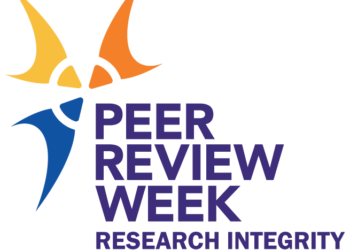At the end of this month, the President of Stanford University, a renowned neuroscientist, will step down after a report commissioned by the university and initiated by stories in the student newspaper called into question the integrity of his research and leadership. Research papers on Alzheimer’s disease published by Marc Tessier-Lavigne (or co-authored or published from his lab, and on Alzheimer’s-related research), the stories alleged, contained significant errors including falsified images. Allegations concerning these very papers had appeared on PubPeer, but hadn’t gotten much traction until a dogged student journalist began working on an initial story last fall.
The university report concluded that Tessier-Lavinge, “did not personally engage in research misconduct” but that the high profile Scientific Panel it engaged, “found noteworthy certain aspects of the environment in [his] laboratories and…approach to correcting the scientific record.” The report described “Lab Culture and Management” (a major section of the report) as having a significant impact on the problems with the research and publication. There was a “lab culture [that] tended to reward the “winners” (that is, postdocs who could generate favorable [research] results and marginalize or diminish the “losers” (that is, postdocs who were unable or struggled to generate such data.”
Dozens of stories in the The Stanford Daily, most of them by freshman Theo Baker, and the 95 page report from the university have been followed by a barrage of news coverage. Plenty of that coverage has focused on Baker, who won a George Polk award – the youngest ever recipient – for his reporting: “Meet the Student who Helped Boot the President of Stanford,” (Washington Post); “Q&A: “How This Stanford Freshman Brought Down the President of the University” (LA Times); “Stanford President Resigns After Reporting from Freshman Journalist” (Teen Vogue), and plenty more. Baker is the son of two prominent journalists, Peter Baker of the New York Times and Susan Glasser of the the New Yorker and, as the Washington Post story noted, he’d been “toddling around” newsrooms “before he could walk.”

Beyond his stories in The Stanford Daily, and after the university’s report was published and Tessier-Lavinge’s resignation was announced, Baker shared his own conclusions in a guest essay in the Times, headlined “The Research Scandal at Stanford is More Common than You Think.” Baker described how he’d been attracted to an anonymous comment on PubPeer (for the Post interview he said a friend had alerted him to it) about Tessier-Lavgine’s research. Specifically, they focused on the manipulation of images in the papers. Then he was able to work with Elisabeth Bik, whom he described as “the foremost research misconduct investigator of this type” and she (and others) spoke both on and off record for his stories. The Times gave Baker’s essay some support for producing digital enhancement of the points he was making about those images. “Basic biostatistical computational errors” and “image anomalies” were found in a 2009 paper about Alzheimer’s that has been cited over 800 times, including the reuse of a control image with improper labeling” is the scrolling text accompanying one.
Baker’s main point in his NYT piece, though, is not about Tessier-Lavinge or his lab per se, but about the problems with the scholarly record and the process of identifying and then correcting errors (and/ or misconduct). He notes that the “shake-up at Stanford has already prompted conversations across the scientific community about its ramifications.” He cites an essay by Holden Thorp of Science, echoing comments by Bik that running a lab may be inconsistent with the demands of high level administrative positions. And a piece in Nature reporting on conversations with a number of researchers about “lab culture and the responsibilities of senior investigators.”
“Running a research laboratory is a full-time job and can’t be done effectively when the principal investigator is simultaneously fulfilling a challenging administrative role.
When I became the dean of Arts and Sciences at the University of North Carolina at Chapel Hill, I decided to stop taking new students and postdocs into my lab.”
Holden Thorp, Editor’s Blog, Science, July 27, 2023
Ivan Oransky and Adam Marcus of Retraction Watch are among those who have echoed Baker’s criticism of process, but they emphasize the responsibility of the journals, rather than Tessier-Lavigne and his lab. For Scientific American, they write that the failures of the journals where Tessier-Lavigne’s papers were published – Cell, Science, and Nature – were profound. Even when Tessier-Lavigne did attempt to make corrections at both Cell and Science years ago, neither issued them (Cell initially determined they weren’t necessary, Science said they were but failed to make them). They, like Baker, raise the issue of the credibility of science and call on “Scientists, universities and publishers… to look in the mirror and realize that every time an obvious flaw is allowed to stand without comment, another justifiable skeptic gets their wings.”
“From a distance, using history-erasing rose-colored glasses, it is reasonable to place the blame squarely on Tessier-Lavigne for the fact that his now disgraced work remained in the scientific record without any flags…..But omitting the failures of the relevant journals (which are among the world’s most prestigious science titles, we might add) would be a serious mistake that will ensure the problem happens again.”
Ivan Oransky and Adam Marcus, Scientific American, August 1, 2023
The takeaway for Baker, the intrepid student journalist, is that the processes of science and scholarship are too important to leave unexamined. “The underlying reasons scientists might feel tempted to cheat must be thoroughly understood. Journals, scientists, academic institutions and the reporters who write about them have been too slow to open these difficult conversations,” he writes.
“Seeking the truth is a shared obligation. It is incumbent on all those involved in the scientific method to focus more vigorously on challenging and reproducing findings and ensuring that substantiated allegations of data manipulation are not ignored or forgotten — whether you’re a part-time research assistant or the president of an elite university. In a cultural moment when science needs all the credibility it can muster, ensuring scientific integrity and earning public trust should be the highest priority.”
Theo Baker for the New York Times, July 30, 2023
It’s hard to argue with this earnest assessment. But it is a disappointing one, and not because research misconduct isn’t a grave and consequential issue. Of course it is. Or because leaders shouldn’t be held to the highest standards. Of course they should. Or even because the soft corruption of double standards and lax enforcement of policies doesn’t deserve attention. Of course it does.
And of course science isn’t the only place where questions of scholarly misconduct and publishing arise; the case of the Jesus’s wife papyrus at Harvard is just one recent example of a tangle of questionable research and publication practices. Writing for the Chronicle of Higher Education about the “Scholarly Screw-up of Biblical Proportions” that was the subject of a book he’s just published, Ariel Sabar revealed that not only had respected scholar of early Christianity Karen King suspected forgery of the incredible source before publishing an analysis of the text asserting its veracity, but the publication of her research and a study of the potential forgery was tainted by conflict of interest. Basic peer review protocols were not followed, and conflicts of interest abounded. The special issue of Harvard Theological Review in question remains available with no retraction or even comment about what was subsequently uncovered about the forged Coptic fragment.
Regular readers of The Scholarly Kitchen — and really any researchers — will know of cases that have materially damaged not only the scholarly record, but the reputation of whole fields with profound consequences. In my own field of early American history, the consequences of the Michael Bellesiles scandal — in which a historian argued that guns were less plentiful and gun culture a product of a later era, his evidence was found wanting through intensive and public review, and awards and employment were rescinded — reverberate today.
And of course there are organizations and resources that are and have been addressing issues of science and publication ethics, Retraction Watch among them. The Committee on Publication Ethics (Cope) has long been working to deal with a huge array of related issues. Last year Alice Meadows interviewed for The Scholarly Kitchen Jodi Schneider of the Sloan Foundation-funded Reducing the Inadvertent Spread of Retracted Research project.
But even if we swap “scholarship” for “science” (a perennial problem in scholarly communications, this conflation) and even if we acknowledge that there are lots of people who care about and work regularly to ensure scholarly integrity at every stage, the rationale cited for demanding better replicates the very problem it proposes to illuminate. The fear of “failures of process that imperil truth (!)” can be as paralyzing as that “winner-rules-all lab culture.” The prospect of adding to the store of a skeptic’s evidence hoard or a conspiracy theorist’s social media rant is daunting indeed. What an artifact of our time that we are using don’t screw up or else to critique an ethos of don’t screw up or else.
It seems clear that there are – beyond the specifics of the Stanford case or even the dynamics of high stakes science – two key contexts that inform this particular framing. One is the elevation of science since the mid-twentieth century, wrapped in the entwined economics of American national security and its research universities. The magnitude of public investment alone makes science de facto a matter of urgency. The second is an accelerating phenomenon in the twenty-first century, a murky and drawn out public confusion about truth, how we ascertain it, and how we can distinguish between differences of opinion versus the difference between what is true and what is false.
It’s worth being attentive to both. It’s hard to live outside our history, but we can be more aware of how it shapes our assumptions and reactions. It’s also worth reading the Stanford report, Baker’s reporting (including his final story about how the report may have been weakened by the failure to grant anonymity to informants), and the news stories that followed. Each emphasizes different aspects of the issues. I’ve also found the discussion about the value of having researcher-administrators keep their hand in research quite interesting. Whatever we make of this story, though, I’d hope we can keep a firm grip on exactly what’s at stake.
Discussion
4 Thoughts on "Science and Truth, Stanford President and Student Journalism Edition"
We all want to (or feel that we need to) win…are in a hurry…and agree to the unwritten rule that there are some fictions best not overlayed with facts (I’m referring to ‘business models’ here). Oh and then we want everything in life to be malleable. A deadly potion.
Yes, “the processes of science are too important to be left unexamined.” The Baker report correctly tells us that “winner rules all lab culture.” That is, that the process rewards “the “winners” (that is, postdocs who could generate favorable [research] results and marginalize or diminish the “losers” (that is, postdocs who were unable or struggled to generate such data.”
At the root of this is the competition for research funds. A competition implies some sort of finishing tape. The first to hit the tape is the winner. In a sporting competition the tape, and who hits it first, are visible to all. However, in a funding competition the tape, by definition, is the “best idea,” namely an idea that, somewhere in the future, will move ahead solutions to our problems better than other ideas.
Without a definite tape, the question becomes: “how we can distinguish between differences of opinion versus the difference between what is true and what is false.” Wall Street long ago found a plausible solution. However charming an idea may seem, hedge your bets and look carefully at track record .
How this might be implemented to determining who is most likely to contribute best to progress in biomedical research was considered decades ago. It was suggested that research agencies, devoted to supporting experimentation, should themselves experiment with funding solutions. The solution proposed – “bicameral review” – has never been given an opportunity.
Folk with outstanding ideas, such as Kariko, who gave us mRNA vaccines, had to struggle for funding so that COVID-19 vaccination approval was “emergency approval” because the dangers of possible side effects had not yet been fully explored. This finishing tape had evaded the perception of those “experts” chosen to adjudicate in research award panels.
Calling out bad behavior is useful, but to state the obvious, publishers, researchers, and universities are just responding to incentives.
Who determines the incentives? Research funders who dole out billions in research spending.
But research funders remain almost myopically obsessed with publication “impact” (measured in citations). Everyone else just ends up dancing to that tune.
Research funders are the root cause of the problems discussed in this excellent article, but regrettably they don’t seem particularly interested in taking responsibility or corrective action.
Richard Wynne – Rescognito
“What an artifact of our time that we are using ‘don’t screw up or else’ to critique an ethos of ‘don’t screw up or else’.”
On the spot. Thank you for providing a respite in this noisy environment.
Part of the problem is indeed the opinion (?) demand (?) that scientists do not make mistakes. That they are right by virtue of being scientists i.e., the priests in the temple of Science – some even argue, in the temple of Truth! And so, both those who cheat chasing this ideal, and those who accidentally trip and fall on the way, are being judged from the moral perspective.
My job title is Scientist, but I honestly prefer to call myself a researcher – I search for answers, again and again. And that’s my job. I enjoy doing it, and I don’t wish to penetrate most inner circles of the temple of Truth, thank you.



